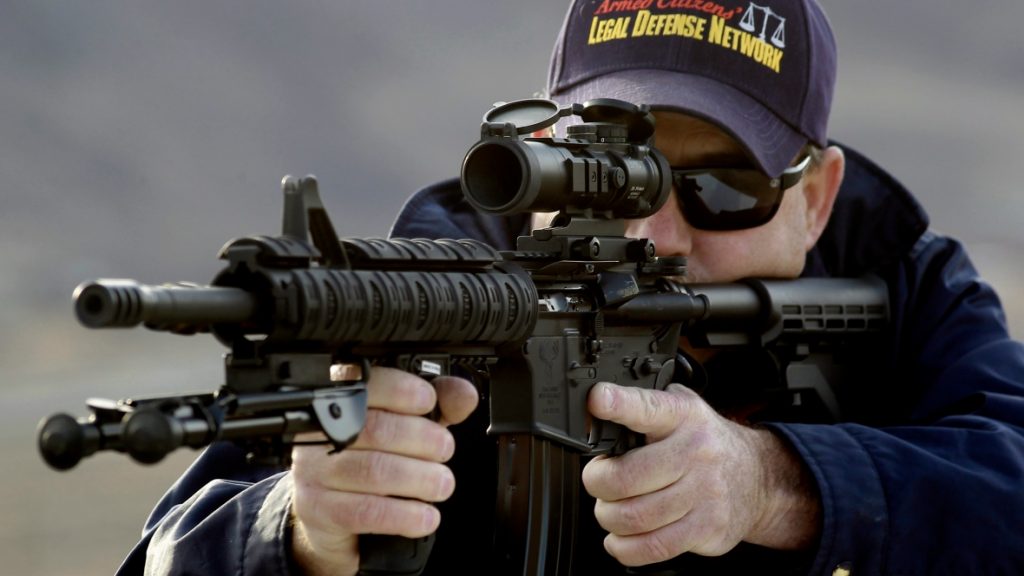Understand Your Rights. Solve Your Legal Problems


A California appeals court ruled on Thursday that the state’s law prohibiting gun magazines capable of holding more than 10 rounds will remain in effect. This ruling, however, sparked controversy when one dissenting judge posted a video of himself loading firearms in his office to support his opinion. The 9th U.S. Circuit Court of Appeals voted 7-4, affirming that the law is consistent with the Second Amendment, as large-capacity magazines are not considered “arms” or “protected accessories.” This decision comes as part of California’s ongoing effort to regulate firearms for public safety.
The appeals court decision upholds a 2016 California law banning magazines that can hold more than 10 rounds, a measure aimed at reducing gun violence. The court's majority opinion emphasized that high-capacity magazines are not protected under the Second Amendment, arguing that they are not necessary for the operation of a firearm and that the government has a right to regulate dangerous components.
The judges also cited the U.S. Supreme Court’s 2022 ruling, which focused on historical gun regulations rather than public safety. According to the majority, California's law aligns with the historical tradition of regulating certain firearm components to protect innocent individuals, particularly by banning items that could be used to escalate violent incidents.
In an unconventional dissent, Judge Lawrence VanDyke voiced his disagreement by sharing a YouTube video where he demonstrates how to load and fire firearms, including high-capacity magazines. The video, filmed in his office, was intended to argue that such magazines should not be subject to government regulation, as they are simply accessories that can enhance a firearm’s lethality.
VanDyke claimed that the video “illustrates why California’s proposed test and the one my colleagues are endorsing today simply do not function.” He argued that banning high-capacity magazines could lead to further restrictions on other firearm accessories that increase lethality, creating a slippery slope of government overreach.
Judge Marsha S. Berzon, in a separate opinion, criticized VanDyke’s video, accusing him of introducing "facts outside the record" and positioning himself as an expert witness on firearms. She argued that this move undermines the legal process and should not have been part of a dissenting opinion.
Following the decision, California Attorney General Rob Bonta expressed strong support for the ruling. He described the law as a "vital measure" that helps reduce a shooter’s ability to escalate violent incidents into mass casualty events. Bonta emphasized that limiting the number of rounds a shooter can fire before reloading is an essential step in protecting public safety, calling the law a “lifesaver.”
While the appeals court's ruling affirms the law's constitutionality, the case is not yet closed. California continues to fight the issue in court following a 2023 district court decision in San Diego, which ruled the law unconstitutional. This ruling came after a lawsuit filed by the California Rifle & Pistol Association and several individuals challenging the law’s compliance with the Second Amendment.
Impact on Gun Regulations: The court’s decision underscores the ongoing national debate over gun control and the interpretation of the Second Amendment. While California's law remains in place, it could set a precedent for other states considering similar measures to regulate high-capacity magazines and other firearm accessories.
Public Safety vs. Second Amendment Rights: The ruling illustrates the tension between public safety concerns and the protection of individual gun rights. Proponents of the law argue that limiting the number of rounds in a magazine is a common-sense approach to preventing gun violence, while critics claim it infringes on constitutional rights.
Continued Legal Challenges: The battle over California's high-capacity magazine ban is far from settled. As the case moves forward, it could have significant implications for gun regulations across the country, particularly in how courts interpret the Second Amendment in the context of modern firearms and accessories.
California’s appeals court ruling to uphold the state’s high-capacity magazine ban marks a key moment in the ongoing legal battle over gun rights and gun control. While the law remains in effect for now, the controversy surrounding Judge VanDyke’s dissent and the case’s future in the courts highlights the polarized views on gun regulation. With the state continuing its appeal, the outcome of this case could set an important precedent for gun laws nationwide.





